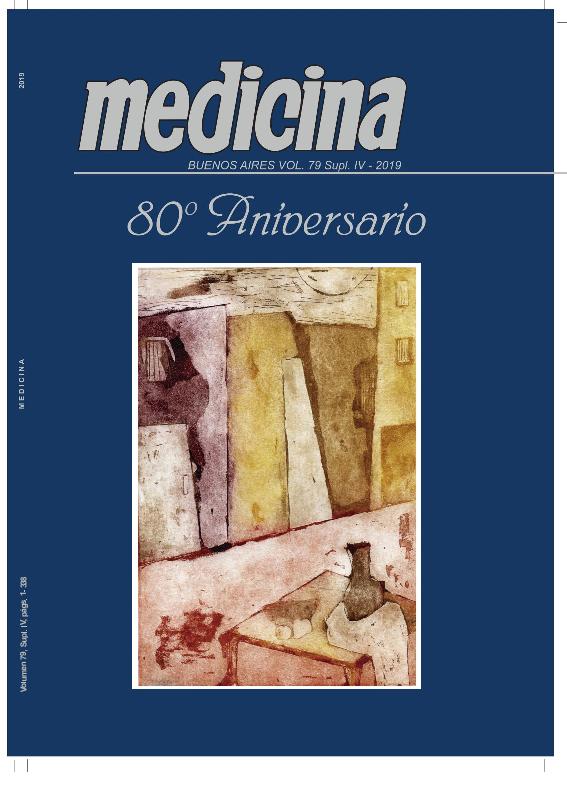Evento
Nanovenoms synthesis for its potential use in antisera production against rattlesnake venom (Crotalus durissus terrificus)
Baudou, Federico Gastón ; Giorgi, Exequiel David
; Giorgi, Exequiel David ; Diaz, Maria Eugenia
; Diaz, Maria Eugenia ; Fusco, Luciano Sebastian
; Fusco, Luciano Sebastian ; Municoy, Sofia
; Municoy, Sofia ; Desimone, Marcelo
; Desimone, Marcelo ; Leiva, Laura Cristina Ana; de Marzi, Mauricio Cesar
; Leiva, Laura Cristina Ana; de Marzi, Mauricio Cesar
 ; Giorgi, Exequiel David
; Giorgi, Exequiel David ; Diaz, Maria Eugenia
; Diaz, Maria Eugenia ; Fusco, Luciano Sebastian
; Fusco, Luciano Sebastian ; Municoy, Sofia
; Municoy, Sofia ; Desimone, Marcelo
; Desimone, Marcelo ; Leiva, Laura Cristina Ana; de Marzi, Mauricio Cesar
; Leiva, Laura Cristina Ana; de Marzi, Mauricio Cesar
Tipo del evento:
Reunión
Nombre del evento:
LXIV Reunión Anual de la Sociedad Argentina de Investigación Clínica; LI Reunión Anual de la Asociación Argentina de Farmacología Experimental; XXI Reunión Anual de la Sociedad Argentina de Biología; XXXI Reunión Anual de la Sociedad Argentina de Protozoología; IX Reunión Anual de la Asociación Argentina de Nanomedicinas y VI Reunión Científica Regional de la Asociación Argentina de Ciencia y Tecnología de Animales de Laboratorio
Fecha del evento:
13/11/2019
Institución Organizadora:
Sociedad Argentina de Investigación Clínica;
Asociación Argentina de Farmacología Experimental;
Sociedad Argentina de Biología;
Sociedad Argentina de Protozoología;
Asociación Argentina de Nanomedicinas;
Asociación Argentina de Ciencia y Tecnología de Animales de Laboratorio;
Título de la revista:
Medicina (Buenos Aires)
Editorial:
Fundación Revista Medicina
ISSN:
0025-7680
e-ISSN:
1669-9106
Idioma:
Inglés
Clasificación temática:
Resumen
Snake antivenoms (AV) production involves successive inoculations of venom (V) in increasing form together with the addition of adjuvants (ADJ) that improve the immune response of animals destined for immunizations. On the other hand, nanoparticles (NP) are being studied with multiple purposes due to their potential therapeutic and immunomodulatory use, and for their ability to transport antigens and induce a specific response against it. Therefore, it is of interest to associate V to NP in order to replacing conventional ADJ in AV production. In this work, nanovenoms (NV) were synthesized by adsorption of Crotalus durissus terrificus (C.d.t.) V proteins with silica NP (NPsi) of 400 nm size (positive/negative charge, +/-). The NPsi (-) were synthesized according to the Stöber method, while a fraction was modified with APTES (NPsi +), and its load and size was verified by potential Z and DLS (dynamic light scattering) respectively. Then, 10 mg of NPsi +/- were incubated with 1 mg / ml of whole V in PBS for 3 h under stirring to favor proteins adsorption to the NPs surface. NV were photographed under MET and also a Fourier Transform Infrared (FTIR) was performed. Crotoxin presence, the main toxic component of C.d.t. venom, was analyzed by hemolysis radial test both in NV and supernatant. NV proteins desorbed by heat treatment were analyzed by SDS-PAGE and immunoblotting. NV FTIR spectra showed intermediate values between those that exhibited C.d.t. V and the NPsi separately. SDS-PAGE and immunoblotting tests confirmed the presence of proteins in NPsi particles and hemolytic halos demonstrated that NPsi +/- were capable of binding crotoxin molecules on their surface. The results reveal the presence of V in both types of NPsi, preserving its activity and therefore its native structure, evidences that allow progress in an upcoming study such as the evaluation of immunogenic activity in experimental animals.
Archivos asociados
Licencia
Identificadores
Colecciones
Eventos(INEDES)
Eventos de INSTITUTO DE ECOLOGIA Y DESARROLLO SUSTENTABLE
Eventos de INSTITUTO DE ECOLOGIA Y DESARROLLO SUSTENTABLE
Eventos(IQUIBA-NEA)
Eventos de INSTITUTO DE QUIMICA BASICA Y APLICADA DEL NORDESTE ARGENTINO
Eventos de INSTITUTO DE QUIMICA BASICA Y APLICADA DEL NORDESTE ARGENTINO
Eventos(IQUIMEFA)
Eventos de INST.QUIMICA Y METABOLISMO DEL FARMACO (I)
Eventos de INST.QUIMICA Y METABOLISMO DEL FARMACO (I)
Citación
Nanovenoms synthesis for its potential use in antisera production against rattlesnake venom (Crotalus durissus terrificus); LXIV Reunión Anual de la Sociedad Argentina de Investigación Clínica; LI Reunión Anual de la Asociación Argentina de Farmacología Experimental; XXI Reunión Anual de la Sociedad Argentina de Biología; XXXI Reunión Anual de la Sociedad Argentina de Protozoología; IX Reunión Anual de la Asociación Argentina de Nanomedicinas y VI Reunión Científica Regional de la Asociación Argentina de Ciencia y Tecnología de Animales de Laboratorio; Mar del Plata; Argentina; 2019; 283-283
Compartir



